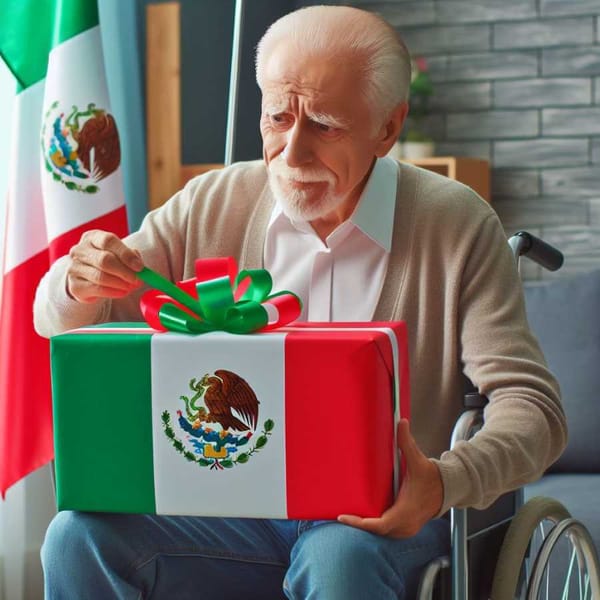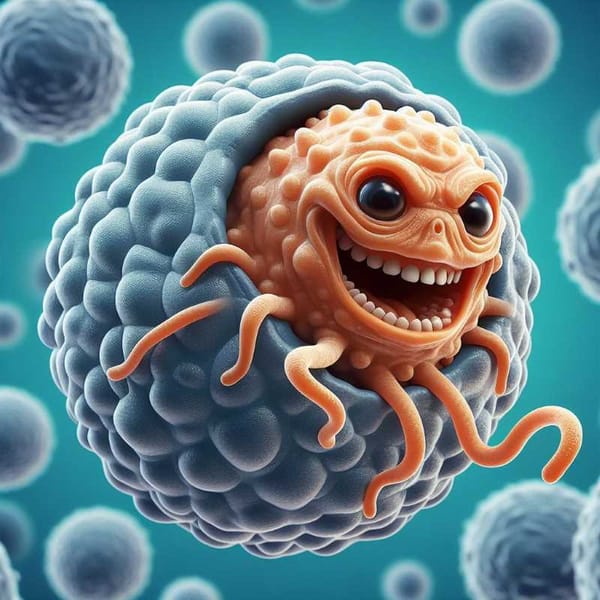Smartphones: A laboratory in your pocket
Smartphones are already an inseparable part of society, but now they could also be a great tool for human health research.

Today, a smartphone stores not only our favorite songs, but an important part of our lives: contact information, birthday videos, vacation photos, and it's also access to our emails and social networks, games, and even school notes. Now, in addition, scientists have turned our smartphones into tools for research; through special applications, they become instruments for collecting valuable data.
For young people, it happened a long time ago, for older people it was not so long ago, but on October 23, 2001, Steve Jobs announced the release of the iPod device with the phrase "a thousand songs in your pocket. Over time, the iPod's functions moved to the iPhone and all cell phones.
Disease hunters
Imagine that you contract an infectious disease. The first thing you would ask is how you got it. The second thing would be how to get cured. Between these two questions, there are other unknowns: how to avoid infecting others, what to do to get cured faster and not get sick again. To answer these questions you need data, data, and more data.
By the mid-19th century, the city of London had begun to grow unchecked due to the Industrial Revolution. At that time there were large cholera epidemics that killed thousands of people in a very short time. To avoid more deaths, it was necessary to know how the disease was transmitted. Before 1854 it was believed that cholera could only be transmitted by direct contact with a sick person and that the contagion was due to the miasmas (or malignant vapors) emanating from that person. But a young doctor named John Snow who lived through one of these epidemics at close quarters developed a different hypothesis.
While everyone thought that direct contact with the sick should be forbidden, John Snow studied the water that people in London drank because he suspected that this was the agent that produced the cholera contagion. Fortunately for Snow, people in the affected districts of London consumed water from the River Thames that was distributed by only two companies, so the young doctor, assisted by other colleagues, went door-to-door to investigate which company supplied each house in the affected area. In an article published in 1856, he noted that these companies supplied water to rich and poor alike, "so that there was a population of 300,000 people of various conditions and occupations intricately mixed within the city, but divided into two groups by a single characteristic: water consumption.
Of the customers of one company, only 313 died while those of the other company died 2,443. Snow was quick to relate this difference to the origin of the water of both companies, which collected it from different points along the River Thames. The water that caused the most casualties was contaminated by waste from the city's pipes that flowed into the river. The medical community doubted Snow's conclusions. However, over time his research helped prevent infection and save lives, so today Snow is considered one of the forerunners of epidemiological research.
Tell me what you do and I'll tell you what you suffer from
Snow's research highlights the importance of collecting epidemiological data. But discovering the causes of other, more complex diseases required scientists to refine their strategies for obtaining information. Today's epidemiological research looks at large numbers of people: studying their eating and health habits, as well as their physical activity. By requesting daily records through interviews, in addition to laboratory tests every few months or years, researchers can find possible causes of some diseases.
In 1948, a research team gathered 5,000 people in Framingham, Massachusetts. Participants underwent a physical examination and a lifestyle interview. Every two years, participants returned to complete their medical history and have a physical exam and laboratory tests. In 1974, 5,000 more people, children, and wives of the first participants were added to the study, adding several generations until 2003. Decades of monitoring of Framingham volunteers led to the discovery that the people most likely to suffer from cardiovascular disease were those with high blood pressure and cholesterol, smoking, weight gain, lack of exercise, and diabetes. These characteristics were risk factors for these conditions, something that today everyone knows, but that had not been scientifically proven until then.
Thanks to the large number of volunteers who participated in the study, the results can be valid for other populations almost anywhere in the world. In addition, this compensates for the loss of data because during that time many patients were able to die, move to another city, or simply abandon the study. Since many volunteers are lost, it is best to start with extra volunteers. Another problem is that one must trust their memory and their honesty when they respond to how they took care of themselves in the last few months. I forget what I ate yesterday. Hence, there may be flaws that affect the accuracy of the results.
Science on the phone
This is where smartphones make their entrance. Scientists are taking advantage of the capabilities of these devices to do their research. Volunteers can use their cell phones to send their data to research institutes instead of filling out logs, which helps keep them on track.
The phones allow the collection of very precise data through sensors such as accelerometers, which can measure physical activity, as well as GPS positioning systems, heart rate monitors, and microphones, and sound analyzers. Data from millions of volunteers around the world can be sent over the Internet to research centers with a single click. In Mexico alone today there are 77 million smartphones, and it is estimated that by 2025 there will be more than 5 billion phones worldwide with advanced sensors to measure many more things.
One example is the Dialbetics and Foodlog applications, which monitor the health and lifestyle of diabetic patients. The application calculates the calories and percentage of carbohydrates, proteins, and fats just by photographing the food. Volunteers in a study using these applications were given a digital glucometer to measure their glucose in the morning. The accelerometers (which detect steps and jumps from the phone carrier) were used to calculate their daily physical activity. All of this information was collected and sent to the researchers for analysis. The patient received advice about his diet or congratulations on his care. The study showed that people with diabetes who used the applications had better control of their glucose levels compared to those who did not. Likewise, many other human kinds of research are being developed in different scientific areas.
A thousand experiments in your pocket
Given this opportunity, in 2015 the Apple company launched the ResearchKit package, a platform that allows any scientist to create iPhone applications that people can download to participate in scientific research from the comfort of their home. Now the company that launched the iPod 18 years ago with the promise of putting a thousand songs in our pockets provides scientists with a powerful research tool. Surely in a few years, we will have a thousand scientific studies underway in our pockets.
One of the challenges is the privacy and responsible use of data. We have all felt spied on when, after talking about a topic in social networks, we receive announcements of products related to that topic, but the data on our health habits and our conditions are even more sensitive information, and researchers using these apps are obliged to protect the confidentiality of the participants. In this regard, Apple has stated that data collected by apps developed with ResearchKit will be kept completely confidential and available only to researchers. To protect the identity of the volunteers, not even Apple itself will have access to or be able to use this information.
Using ResearchKit, applications such as EpiWatch have already been developed, which uses accelerometers to record epileptic seizures to obtain data to help find better treatments. In addition, the application sends an alert to the carrier's family members when an epileptic seizure begins.
An app called Neurons monitors the symptoms of patients with multiple sclerosis. Sleep Health allows you to record your sleeping habits to study the disorders that affect you and mPower is designed to understand the evolution of Parkinson's disease with tests of dexterity, balance, and memory. This disease impairs patients' control of movement by destroying dopaminergic neurons. The mPower app measures a patient's ability to control his or her movements like that of the office: with the phone in the pocket, the patient is asked to walk in a straight line.
Accelerometers measure the patient's deviations and wobbles (balance). In a different test, two red circles appear on the phone screen, which the patient has to touch alternately with the index and middle fingers to measure his reaction time. Finally, the app will ask the patient to bring their mouth to the microphone and say "ah" for 10 seconds. Variations in sound properties are an indirect measure of the patient's ability to control the muscles that produce voice. All of this data is analyzed to monitor the health status of Parkinson's patients, and the patient can decide whether or not to share it with researchers.
These advantages will dramatically increase the number of participants in scientific studies, providing a wealth of data without sacrificing accuracy. In addition, the experiments will be conducted under conditions that are more normal for the participant, such as in the home rather than in a laboratory. The data will come from different regions, which will make it possible to measure the effect of variables such as climate, altitude, and the country's food products, and thus to identify geographic, dietary, and physical activity effects. The additional information, such as age, sex, occupation, hours of work, and sleep, will make it possible to analyze subgroups and distinguish the effects of diseases or treatments on men and women, children and adults, and others.
Research using cell phone applications analyzed 4,000 participants in just four months. Obtaining this amount of data using traditional research methods would have taken more than three years (eight times longer). There are already hundreds of experiments published in scientific journals, and their authors claim that the results are strikingly similar to those of studies conducted under controlled conditions within research institutes.
Smartphones are becoming a powerful tool for researching all phenomena related to human behavior and health. They allow millions of people around the world to be studied simultaneously, generating great advances in scientific knowledge. So if you ever receive an invitation to participate in research through your smartphone, check that the ethical aspects are in order and encourage yourself to collaborate with the scientific community to generate more knowledge. It will take you little time and in return, you could contribute a lot to science.
Big Data
A citizen science experiment with smartphones can generate more data than a team of researchers could process in many years with traditional computers in a laboratory. The information is not only voluminous but diverse: today many variables can be measured at the same time, which further complicates subsequent analysis.
Smartphones are essential tools in this era of massive data or big data. The companies Google, Amazon, and Microsoft offer storage and analysis services of this massive data in the cloud. This is good news for scientists: today they don't need either prolonged data collection campaigns that extend over years or their supercomputers that can cost millions of dollars.
Tremors
At the University of California, Berkeley campus, an app was developed to detect and measure tremors with the cell phone. It is called MyShake and can distinguish between tremors due to an earthquake and those of normal user movement. A widely distributed seismology app can help map the magnitude of an earthquake and the damage it causes, all in a very short time.
All in one
A sensor is a device that measures some form of energy (e.g. temperature) and converts it into a signal that can then be read by an electronic instrument. Today's smartphones are equipped with increasingly accurate sensors.
Accelerometer
It is the sensor that measures movement, position, vibration, and acceleration. In phones, its common use is to detect movement, inclination, and speed; it is responsible for rotating the screen image if you move the phone, determining your speed, and recording your physical activity, for example, the steps you take. Its use is investigated to monitor posture or detect user falls.
Gyroscope
It is used to determine the speed of rotation of the phone for three axes. It detects slight rotations in the device as well as its orientation (it helps the accelerometer to know how the phone is oriented). The cell phone camera relies on this sensor to correct unwanted movements and prevent your photos from being blurred. With an application, you can monitor people with Parkinson's or epileptic seizures.
Proximity sensor
Determines the proximity or position of an object on the screen. It is thanks to this sensor that the keypad is deactivated and the telephone is saved, for example, during a phone call, when the face is close to the screen.
Ambient light sensor
This sensor detects the presence or absence of light utilizing photocells; it adjusts the brightness of the screen and therefore reduces energy consumption.
Magnetometer
It is the phone's compass and determines the angle of the phone about the Earth's magnetic pole. Thanks to this sensor our phones determine in which direction we are moving. Using data from the accelerometer and GPS can locate us on the map and thus our phones become navigation instruments.
GPS
Supported by satellites, it calculates and indicates our geographic location. A modern GPS can also rely on data such as cell signal strength (distance to a cell antenna) to provide us with a more accurate location.
Camera
There are applications to perform simple ophthalmological tests but they are still not very reliable.
Microphone and sound analyzers
They provide vital information about the environment in which the individual moves. Using the cell phone microphone, some researchers have developed a spirometer (an instrument that measures the flow and volume of air inhaled and exhaled through the lungs).
Cosmic Rays
A team of particle physicists at the University of California, Irvine campus, developed an app called CRAYFISH that detects when an electrically charged particle passes through and interacts with phone circuits. This phenomenon happens all the time and has no consequences, but by integrating the information of many users through the app it is possible to detect the cascades of elementary particles that are formed when a cosmic ray hits an atmospheric particle. From the distribution of the signals, it is possible to deduce the energy of the original cosmic ray.
Authors:
Jonathan Cueto Escobedo has a Ph.D. in psychology from the National Autonomous University of Mexico. He is currently a researcher at the Institute of Health Sciences of Veracruz University.
María Gabriela Nachón García is a researcher and director of the Institute of Health Sciences of the Veracruz University. Her research focuses on the role of emotions and stress in anxiety and addictions and the impact of certain diseases on other conditions.
Source: National Autonomous University of Mexico (UNAM), ¿Cómo ves?




